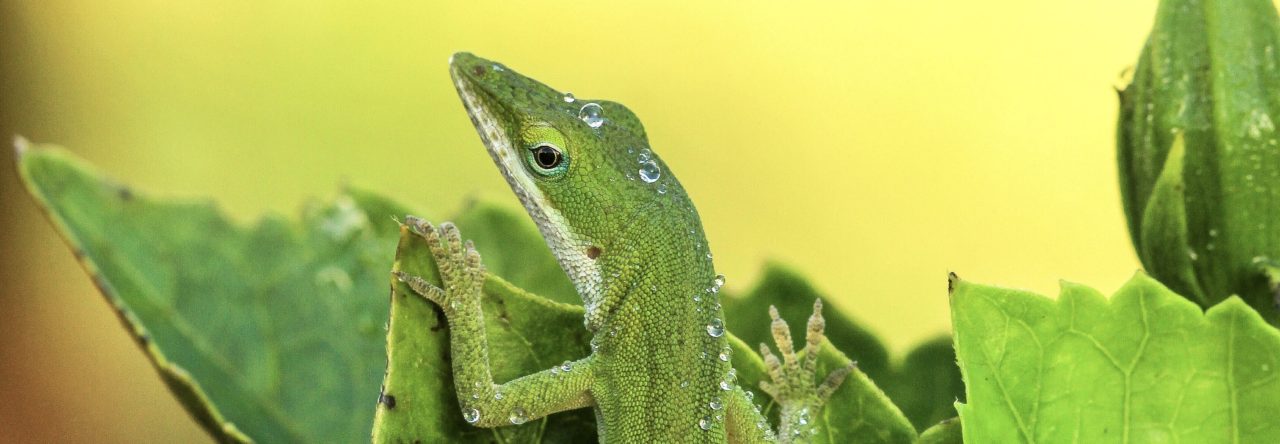 The 50th annual conference of the Animal Behavior Society kicks off today in Boulder, Colorado. Anole presentations are few: only two posters, which begs the question, why aren’t more behavioral biologists studying anoles? Certainly, their behavior is easily observed and manipulated. And, indeed, some such work is conducted, but not nearly as much as one might expect given the ubiquity of the animals in the southeastern U.S. and throughout the neotropics. And, moreover, the behavioral work that is done is relatively infrequently published in the behavior literature or, apparently, reported at behavior meetings. Behaviorists, you’re missing the boat!
The 50th annual conference of the Animal Behavior Society kicks off today in Boulder, Colorado. Anole presentations are few: only two posters, which begs the question, why aren’t more behavioral biologists studying anoles? Certainly, their behavior is easily observed and manipulated. And, indeed, some such work is conducted, but not nearly as much as one might expect given the ubiquity of the animals in the southeastern U.S. and throughout the neotropics. And, moreover, the behavioral work that is done is relatively infrequently published in the behavior literature or, apparently, reported at behavior meetings. Behaviorists, you’re missing the boat!
In any case, the sole anole reporter at ABS is Joe Macedonia, who is presenting two posters. The first is a comparison of the behavior of the odd gray-dewlapped green anoles with more ordinary, red-dewlapped populations, and the second is a study using anole robots to determine the relative importance of dewlap color and behavior in species recognition; this study has recently been published and we should be hearing more about it soon.
A Comparison of Headbob Display Structure in Gray-Dewlapped and Red-Dewlapped Anolis carolinensis
JM Macedonia, LE Cherry, DL Clark
Many species of diurnal lizards engage in motion displays, termed ‘pushups’ or ‘headbobs’. In the diverse genus Anolis, headbob display structure typically exhibits substantial interspecific, and in some cases population-level, variation. The green anole (Anolis carolinensis) exhibits a red-dewlapped (RD) form found throughout the southeastern USA, as well as a gray-dewlapped (GD) form that is restricted to southwest Florida. Prior research has shown that RD A. carolinensis produce headbob displays of three basic types (Type A, B, C) that vary primarily in display unit durations. Based on known genetic and physiological differences between the two dewlap color forms, we hypothesized that GD and RD males also would differ in headbob display temporal structure. We quantified 440 displays from 24 GD and 15 RD males, and found some, though not all, display units to differ significantly in duration between the two populations. Our results therefore indicate that stereotyped display behavior can be added to the list of known traits that differ between the gray-dewlapped and red-dewlapped forms of A. carolinensis.
Color and motion display discrimination in Anolis grahami: evidence from responses to lizard robots
JM Macedonia, DL Clark, DJ Kemp
Anolis lizards exhibit color and motion displays that are thought to mediate species recognition, but direct experimental support is limited. We used lizard robots in two field experiments to test the relative importance of dewlap color (calibrated using a computational visual model) and headbob display structure for species recognition in Anolis grahami on Bermuda. Results from experiment 1 revealed equivalent, significant decrements in responsiveness of 102 adult male subjects to color and motion display manipulations, relative to the conspecific robot control. Findings also suggested that dewlap hue, not brightness, was responsible for reduced subject response to non-control dewlap colors. In experiment 2 we presented 93 different A. grahami males with conspecific or heterospecific (Anolis extremus) robots that performed their own, or the other species’, headbob displays. Results revealed species-specific body/dewlap coloration to be more important than headbob display structure for species recognition. Although more work is needed, our findings support the proposition that interspecific variation in color and motion displays provides important cues for species recogntition in anoles.












 Recently, we had a post on the
Recently, we had a post on the 

